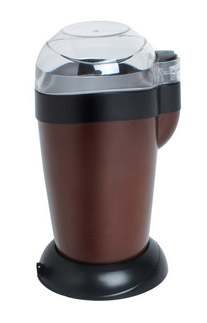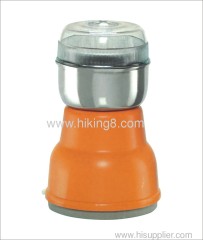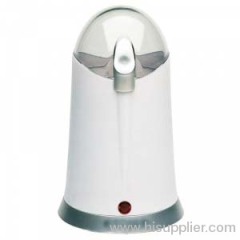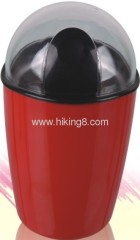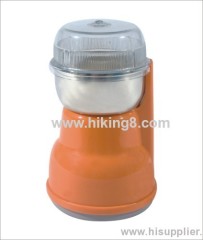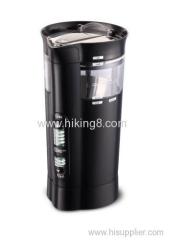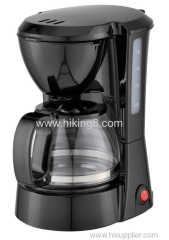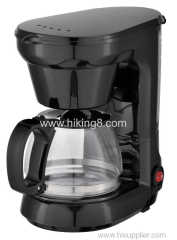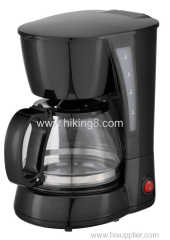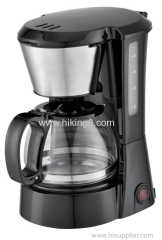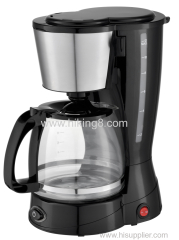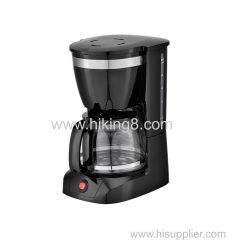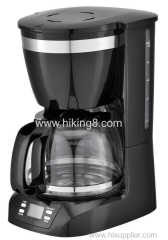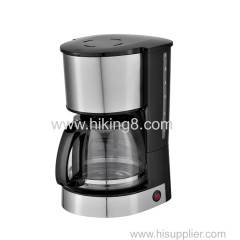
|
Hiking Electronic CO., Ltd.
|
Cheap mini electric coffee grinder for sale
| Price: | 4.0 USD |
| Payment Terms: | T/T,L/C |
| Place of Origin: | Zhejiang, China (Mainland) |
|
|
|
| Add to My Favorites | |
| HiSupplier Escrow |
Product Detail
Mini electric coffee grinder
Power:220-240V,50HZ/60HZ,120W
Capacity:60-80G
Make coffee convenietly for you.
Cheap mini electric coffee grinder for sale
Model No.:CM160
| Feature |
| Power:220-240V,50HZ/60HZ,120W Capacity:60-80G Make coffee convenietly for you. modern stylish design |
| Packing |
| GIFT BOX:10.8X10.8X17.7cm CTN:45.2x34.4x37.4cm 24PCS/CTN 16.5KGS / 17.5KGS 11640PCS/20'FCL 28080PCS/40'HQ |
| Contact |
| we will keep online every work day.if you have any questions for products plz contact me Email:info@ hiking8.com |
mini electric coffee grinder for sale
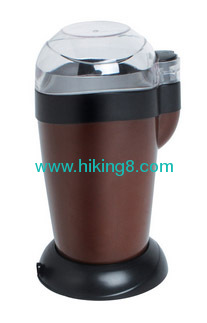
History of coffee grinder
Coffee beans were discovered around 900 A.D. and were first used as a beverage in Yeman. It is also where the coffee beans were first ground. Before we talk about the grinding, we need to step back and look at how coffee cherries were first turned into coffee beans. Coffee cherries were first picked from coffee bushes or trees depending on how well they grew. These Arabica coffee cherries were picked when the cherries were a bright color. They were then put in the fire and roasted until the cherries burst open. This process produced two roasted coffee beans from each coffee cherry.
Now, lets talk about how they were ground. People in the Middle East were already grinding grains and spices. They were grinding them by simply pounding between two rocks or using a pestle and mortar. The pestle and mortar were made mainly from stone and wood because they had resistance to absorbing the chemicals that left flavors and scents of various foods. Coffee beans, although much tougher, were also ground by this method. However, even though they were boiled first because they were tougher than grains and spices, they were not ground very fine. The coarsely ground beans were put in a special copper or brass coffee maker called an Ibrik. An Ibrik is somewhat round on the bottom half and then had a straight body the rest of the way up. There was a long fairly wide spout at the top and a metal strap handle in the shape of a large C connected to the pot. Drinkers strained the coffee through their teeth to get the full flavor of the coffee. Today, some still grind the coffee beans with a pestle and mortar. To get the consistency of a drip grind, it takes up to ten hours of grinding with a stone pestle and mortar by hand.
As the coffee beans were exported by traders to different parts of the world, coffee grinders were created using some other kind of apparatus. When coffee reached Europe, spice grinders that were already being used were the first step towards the mechanical coffee grinder. It is believed that the first bean grinder was produced as early as the 14th century in Europe. The first known coffee grinder was mass produced in the early 1800's in France, but the inventor remains unknown.
By the mid-1800s, various coffee grinders were seen in almost every home in Europe and America. Most of the coffee grinders had a grinding handle on the top of a box that was set inside a bowl shaped holder of roasted coffee beans. The bottom of the box had a drawer that held the coffee beans after being ground. Some grinders were elaborately made and decorated. Today's household coffee grinders are mainly electric and use ceramic burrs or stainless steel blades to grind coffee. Commercial use grinders however use only ceramic burrs.

